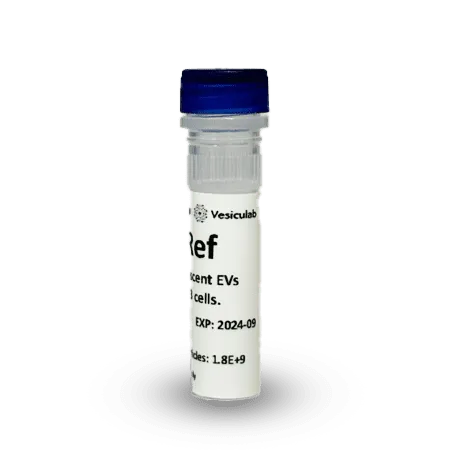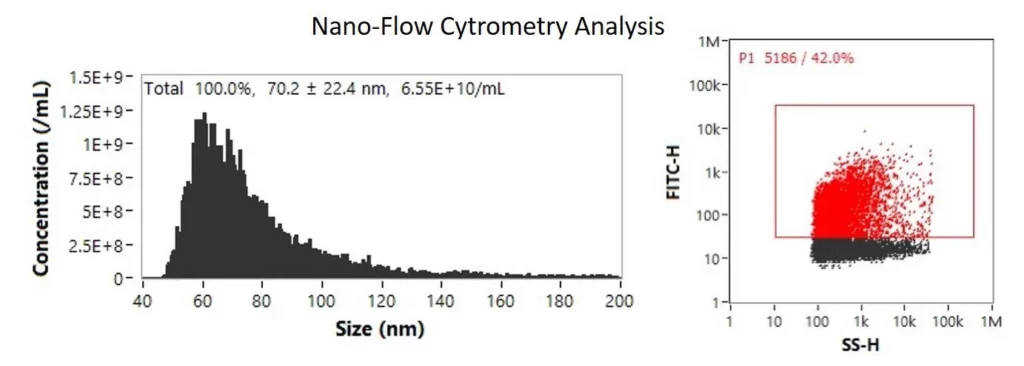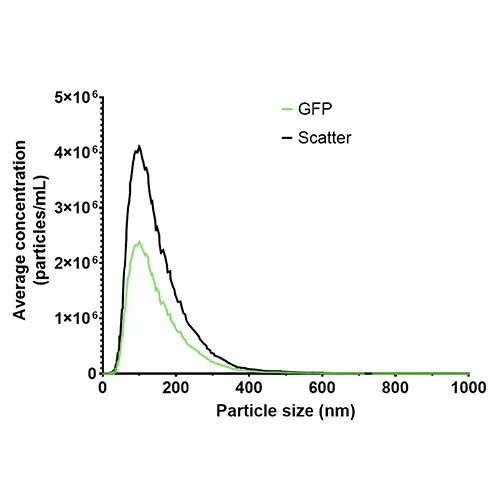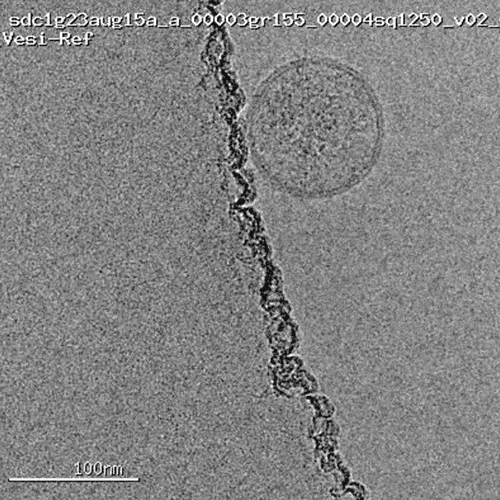
Vesi-Ref CD63-GFP
Fluorescent extracellular vesicle standard for nano-bio research.
- Home
- Vesi-Ref CD63-GFP
Vesi-Ref CD63-GFP introduces certainty and repeatability in functional nanoparticles analysis.
By assessing the limits of detection of analytical instruments used to measure size, concentration and biomarkers by fluorescence labelling, it is possible to confirm that unknown samples are correctly characterised for these properties.
Label → Measure → Progress

Size & Concentration Measurement
Extracellular vesicles are characteristically broad in size distribution, making the assessment of their size potentially difficult with most analytical methods. Before embarking on a long session, run an aliquot of Vesi-Ref to check the output. Adjust acquisition parameters if size distribution is truncated/not in nominal range or if particle concentration is over/under counted.
- NTA - Nanoparticle Analysis
- DLS - Dynamic Light Scattering
- nFCM - Nano-Flow Cytometry
- TEM - Transmission Electron Microscopy
- SP-IRIS - Single Particle Interferometric Reflective Image Sensing
- TRPS & MRPS - Resistive Pulse Sensing

Vesi-Ref CD63-GFP nano-flow cytometry data acquired by Sophie Novault et Pierre-Henri Commere at Institut Pasteur, Paris on a Flow NanoAnalyzer instrument.

Fluorescence-Nanoparticle Tracking Analysis (F-NTA) measurement of Vesi-Ref CD63-GFP. Performed by Hannah Jackson at The University of Nottingham (https://www.nottingham.ac.uk/life-sciences/people/hannah.jackson5) on a ZetaView® instrument.

Phenotyping by Fluorescent Labelling
Assessing the sensitivity of detection in fluorescence is crucial, as under or over representation of signal can lead to unsuccessful experiments. Vesi-Ref’s strong GFP signal enables to control the sensitivity of fluorescence detection in most modern techniques aimed at bio-nanoparticles analysis, including:
- Flow Cytometry (cell analyzers and FACS sorters)
- Fluorescence Nanoparticle Tracking Analysis (f-NTA)
- Single Particle Interferometric Reflectance Image Sensing (SP-IRIS)
- Nano-Flow Cytometry (nFCM)
- Fluorescence-Microfluidic Resistive Pulse Sensing (F-MRPS)
Vesi-Ref CD63-GFP Technical Description
| Origin | Human embryonic kidney cells (HEK293) |
| Quantity | 100µL (1×109 particles) |
| Storage conditions (lyophilised) | Up to 1 years at 4°C |
| Storage (reconstituted suspension) | Up to 6 months at -80°C. Up to one month at -20°C. |

